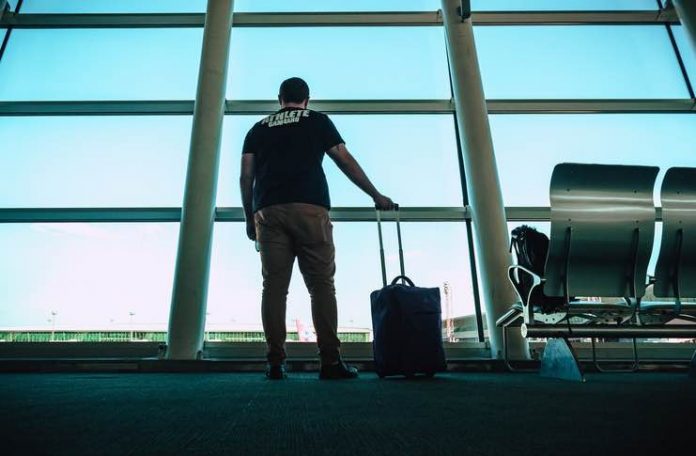
Traveling is a greater challenge for smokers today than it ever was in the past. The days of being able to light up on a plane are long gone, and many airports have been closing their indoor smoking lounges over the past several years – a trend that only accelerated during the height of the COVID-19 pandemic in 2020. In many cases, the most that you can expect to find is a caged-in outdoor smoking area, but even those are becoming rarer with the increasing number of smoke-free airports around the world.
As difficult as life can be for a smoker who wants to travel, it’s definitely possible to see the world without experiencing constant nicotine fits. In fact, it isn’t that hard at all if you know what you’re doing. In this post, we’ll try to clarify everything that you need to know. This is the ultimate travel guide for smokers.
Reduce Your Nicotine Intake Before Traveling
One of the best things that you can do as a smoker before traveling is to reduce your nicotine intake as much as possible. In most of the world, local laws are definitely not favorable for smokers – so you’re undoubtedly going to have times when you’d like to light up but can’t.
If you lower your nicotine intake in advance, you’ll find any withdrawal symptoms much easier to manage. Consider grabbing some JUULpods and switching to vaping. Vapers often find that they can go several hours without using nicotine if they need to, and it isn’t really a problem. That’s because vaping products generally don’t deliver as much nicotine per puff as cigarettes do.
Pack Your Smoking Supplies Correctly
If you’re going to bring cigarettes and smoking supplies with you when traveling, it’s important to pack them correctly. If you’re traveling from the United States, there are no restrictions as to how many cigarettes you can pack in your carry-on and checked luggage. You can also carry a pack of cigarettes in your pocket.
If you’re traveling internationally, though, there may be a limit on how many cigarettes you can import for personal use. Some countries may also make you pay import duties for tobacco products. However, you can get some of that money back by buying cigarettes at a duty-free store before leaving the country.
Traveling with a lighter or matches, on the other hand, is a slightly different story because there are many safety restrictions in place for flammable items.
- Electronic lighters are permitted in your carry-on bag but must be protected against accidental activation. They’re prohibited in checked luggage.
- Butane and lighter fluid aren’t allowed on flights.
- Disposable lighters and Zippo lighters are permitted in your carry-on bag. They’re prohibited in checked luggage unless they have no fuel or are stored in an approved carrying case. If you want to pack a lighter in your checked luggage, you might want to include a note indicating that the lighter has no fuel.
- Matches are allowed – one book only – in your carry-on bag as long as they aren’t the strike-anywhere type. They’re prohibited in checked luggage.
- Torch lighters aren’t allowed on flights.
Consider Bringing an Alternative Form of Nicotine
Given how difficult it can be to find places where you’re allowed to smoke when you travel, it’s a very good idea to consider bringing an alternative form of nicotine that doesn’t produce smoke or vapor such as nicotine gum or pouches.
No one can restrict where you are and aren’t allowed to use nicotine replacement products, so bringing an alternative form of nicotine is an excellent way to ensure that you won’t experience withdrawal symptoms.
Learn How to Find Airport Smoking Areas
As we mentioned at the beginning of this article, it has become increasingly difficult to find smoking areas at airports over the years – but they do still exist. If you’re passing through an airport that has a smoking area, there might be signs in the terminal indicating which way you should go.
You might also consider asking an employee for help because airports don’t always include smoking areas on their maps. The website Airport Smokers has a list of smoking areas in airports around the world, and you might find the information helpful.
Make a Plan for Airports Without Smoking Areas
Although it’s possible to find airport smoking areas in many cases even during today’s age of smoke-free airports, it’s definitely more difficult than ever – so you should have a plan in place for airports that don’t allow smoking. In many cases, it’s best to bring an alternative form of nicotine supplementation and just assume that you won’t be able to smoke at all.
If you don’t bring a nicotine replacement product when traveling and find yourself in an airport without a smoking area, you’ll have to leave the terminal entirely to have a cigarette. In that case, you’ll have to take your bags out of the airport and go to an outdoor smoking area. When you return to the airport, you’ll have to go through the security checkpoint again.
Note that leaving an airport to smoke will be especially inconvenient if you have a layover in a foreign country. In that case, you’ll have to pass through customs and actually go through the process of entering the country. That’s a pretty tall order just to smoke a cigarette, so you’ll probably be much happier if you have some nicotine gum available instead.
Know the Smoking Laws in Your Destination Country
The last thing you need to do as a traveling smoker is making sure that you completely understand the smoking laws in your destination country. Many places have become increasingly restrictive toward smokers in recent years. In some nations, it’s a crime to smoke almost anywhere in public outside of designated smoking areas – and ignoring the rules can potentially subject you to a significant fine.
Note that many countries and cities also have strict laws requiring littering – and in many cases, the penalty for tossing a cigarette butt on the sidewalk can be quite steep. When you do smoke in public, always discard your butts properly.









